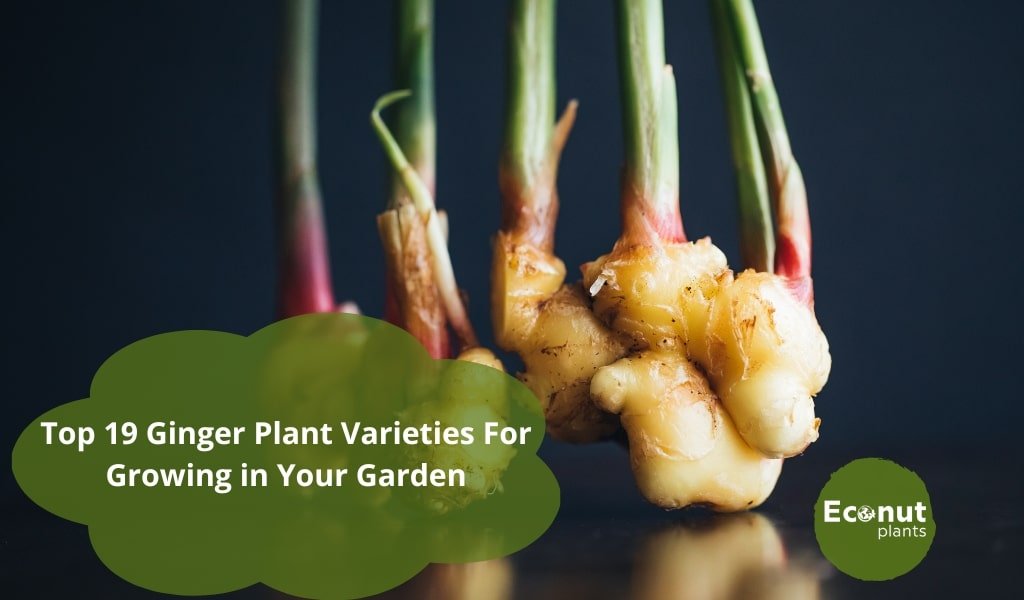The Ginger Plant has been used for medicinal purposes since time immemorial. This plant has various applications in the Ayurvedic treatment methods utilized in India.
The ginger plant is definitely a gift from nature to humans. This plant is mostly used medicinally. Ginger is also used as a spice to enhance the flavour of meals. In this article we will learn about different varieties of ginger.
Types of Ginger Plants
There are other varieties of ginger that are used as a spice. Numerous varieties of ginger are prized for both their aesthetic qualities and therapeutic benefits.
1. Common Ginger
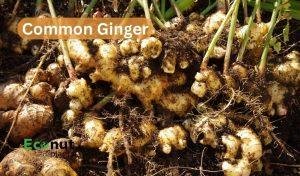
Botanical Name: Zingiber Officinal
Plant Type: Herbaceous Perennial
Hardiness Zones: 8 to 12
Sun Exposure: Direct Sun
Common Ginger is a popular spice in both cuisine and medicinal. It has powerful therapeutic qualities. This grows best when it is directly exposed to sunshine. It is simple to plant and develop on a huge scale for public use. It is used in a variety of ways, including fresh ginger, powdered ginger and dry ginger root.
Ginger has several health benefits. Fresh ginger rhizome paste or grated improves cooking and marinating. Ginger extracts are also used in medicine, packaged foods, and hot drinks. Ginger powder is essential in baking, cooking, and the preparation of cold beverages such as ginger ale.
2. Butterfly ginger
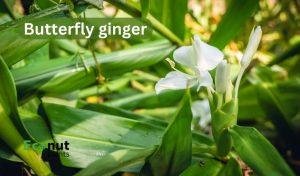
Botanical Name: Hedychium coronarium
Plant Type: Rhizomatous tender perennial
Hardiness Zones: 8 to 10
Sun Exposure: Direct Sun
Butterfly bears fragrant blooms in the shape of butterfly wings. Its spicy roots are used to flavour soups, and the essential oil can help with fevers. The butterfly lily White Ginger Plant, and hedychium, the butterfly plant got its name because its blossoms resemble butterfly wings. This plant may grow from half a meter to six meters tall.
Flowers come in a variety of colours, including orange, white, red, and yellow. The blooms are extremely huge, and even the leaves are scented. Hydechiums are mostly used in landscaping. Because the rhizomes of this plant develop swiftly, it is necessary to transplant the Hydechiums on a regular basis.
3. White ginger

Botanical Name: Hedychium coronarium
Plant Type: Perennial
Hardiness Zones: 8 to 10
Sun Exposure: Full sun or part shade
This Indian variety of flowering ginger, the White Ginger Lily, has beautiful white flowers that look like jasmine. White ginger lily is also grown in Hawaii for its ornamental value and in China for its medicinal properties. An aphrodisiac that can be used against indigestion, constipation, anorexia, and stomach pain
This perennial flowering plant prefers to grow in damp conditions such as rain forests and near streams. These have a strong fragrance and a butterfly shape. Another feature of the White Ginger Lily is its long, elongated, dark-green oval leaves. These leaves can measure about a foot long and four feet wide.
4. Beehive Ginger

Botanical Name: Zingiber spectabile
Plant Type: Herbacious Perennial
Hardiness Zones: 9 to 11
Sun Exposure: Full Sun
Beehive ginger gets its name from the shape of the blossom heads, which resemble a beehive. Other names for this plant include “Ginger wort” and “Malaysian Ginger.” This edible ginger is not commonly utilized in the culinary world. It is more commonly used in medical fields to treat health conditions.
The leaves are ground into a paste and applied to the skin to cure pain, headaches, and burns. Rhizomes can be utilized in the same way that ginger is, but they are not as powerful. Flower heads can grow up to 12 inches long. The bracts on the flower head look like a beehive when mounted on a spike and can be red, orange, white, or yellow.
5. Torch Ginger

Botanical Name: Etlingera elatior
Plant Type: Herbacious Perennial
Hardiness Zones: 10 to 12
Sun Exposure: Full sun to partial shade
Torch ginger is a huge, colourful, and amazing ginger that adds tonnes of tropical drama to the yard! It grows quickly, up to a height of 15 feet, and its spread is almost as great. Given its size, this plant requires a designated area in the garden. When you see it bloom, you won’t regret giving it the space.
Provide shade from the afternoon sun for your torch, ginger. Even though the morning sun can be strong, too much exposure to the sun can scorch your lovely leaves. The exquisitely huge and lovely blooms of torch ginger are well-known, and they are frequently used in floral design and culinary arts.
The velvety, red bracts envelop the primarily red flowers, which also contain some white or pink. They smell like a combination of mint and lemongrass and have a sweet and tangy taste.
6. Myoga Ginger
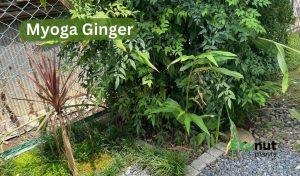
Botanical Name: Zingiber mioga
Plant Type: Deciduous herbaceous perennial
Hardiness Zones: 7 to 10
Sun Exposure: Full Sun
The blossoms and shoots of Myoga Ginger are used in cooking. They have a light, refreshing flavour and a powerful, pungent scent. Japanese ginger, commonly known as Myoga ginger or just Myoga, is a perennial, herbaceous plant native to Japan and the Korean peninsula.
Myoga may be grown in somewhat shaded beds or in pots inside or outdoors. It was not formerly prevalent in the United States, but it is now more easily found in nurseries. They will grow to around 18 inches tall, but if you fertilize them, they may grow twice as tall. To consume, the buds and young shoots are picked.
7. Mango Ginger

Botanical Name: Curcuma amada
Plant Type: Spice Plant
Hardiness Zones: 8 to 10
Sun Exposure: Direct Sunlight
Mango ginger has an aesthetic appeal and is delicious. The garden will take on an airy charm thanks to this amazing ginger. Large, smooth, green leaves that are broad and beautiful make up the foliage. In cut flower arrangements, the leaves and the blooms look fantastic together.
Mango ginger has flowers that are similar to the well-known “Siam Tulip,” but they are much bigger on the plant. The plant may grow up to 4 feet tall in a season and produce gorgeous yellow flowers with pink and white bracts all summer long.
Mango and ginger should be kept partly shaded. Its leaves will burn from too much sun. Like most gingers, this root is edible, although its flavour is softer and sweeter than regular ginger. The roots have a smell that is reminiscent of ripe mangos, hence the name. Delicious!
8. Yellow ginger
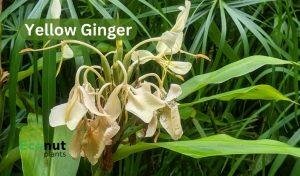
Botanical Name: Hedychium flavescens
Plant Type: Perennials
Hardiness Zones: 7 to 8
Sun Exposure: Full Sun
Yellow ginger root is the rhizome stem-root of the Zingiber officinal plant. Ginger is a perennial plant of the Zingiberaceae family, which has several species. Ginger root is a fibrous rhizome that clusters together and sprouts in different directions. The term “ginger” is derived from the Sanskrit word for “horn-root.”
Common ginger rhizomes grow to be 2.5 – 15 cm long on average. The ginger plant also develops leafy stems that can grow to be 3 to 4 feet tall. The ginger root may be luscious and meaty depending on its development. Yellow ginger root that is older is drier and stringier. Fresh ginger root has a powerful scent and a spicy, pungent flavour.
9. Crepe Ginger
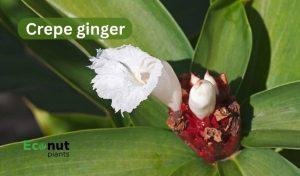
Botanical Name: Cheilocostus speciosus
Plant Type: Rhizomatous herb
Hardiness Zones: 9 to 11
Sun Exposure: Full sun exposure but can adapt to partial shade
Ginger crepe Malay ginger and cane reed are two more names for this plant. It’s famous for its dazzling white blossoms that look like crepe paper. Flowers and buds are edible and have a strong flavour. Malay ginger is most stunning ornamental ginger plants. This crepe ginger is known as blooming ginger because of its thin, wavy blossoms.
Malay ginger is native to Malaysia and thrives in warm, humid areas. This ginger plant’s stems may grow up to 10 feet tall. When the plant blooms, reddish-purple bracts with a conical shape arise. This bunch of bracts subsequently gives birth to beautiful little white blooms with a subtle yellow centre.
10. Turmeric
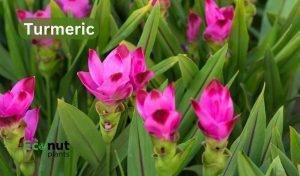
Botanical Name: Curcuma longa
Plant Type: Perennial herbaceous
Hardiness Zones: 7 to 11
Sun Exposure: Full Sun
The essential spice in Indian curries is a super food as well as a food colouring. Its roots have a peppery taste with a subtle lemon undertone. Turmeric is one of the most commonly used Indian spices. This yellowish-orange rhizome belongs to the ginger family.
Because of the presence of colourful chemical called curcumas, the orange ginger rhizome produces a bright yellow powder. The turmeric rhizome is typically used in powder form to provide a delicious but somewhat bitter flavour to meals. Turmeric has cultural significance and is used in a variety of Indian religious rituals.
11. Red Ginger
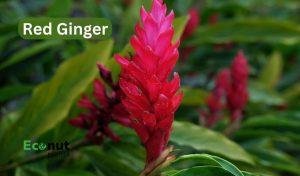
Botanical Name: Alpinia purpurata
Plant Type: Perennial
Hardiness Zones: 10 to 11
Sun Exposure: Partial sun
This enormous, commanding ginger can reach a height of eight feet! Certain variants of this shrub bloom year-round in tropical areas. Often called red ginger, this ginger is distinguished by its huge, brilliantly crimson bracts that encase tiny, fragrant blooms. It smells very delicious, spicy, and lemony.
Red ginger will continue to bloom if planted in full light. This is a great ornament because of its exceptionally extended flowering season. Because they are smaller than full-sized types yet still have lovely, colourful bracts and fragrant blooms, dwarf variants are excellent container plants.
In the heat, make sure your Red ginger has lots of water. Reduce the amount of water you give this ginger plant when it stays dormant in the winter, as too much water might cause root rot.
12. Dancing Ladies Ginger
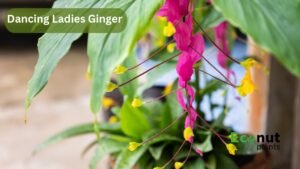
Botanical Name: Globba winitii
Plant Type: Perennial
Hardiness Zones: 8 to 11
Sun Exposure: Full Sun
The genus Globba includes the ginger known as “Dancing Ladies.” Because of the shape of their blossoms, the plants in this genus are also referred to as dragon gingers. The stems of the plant are adorned with long, pendulous rows of crimson bracts, and each bract has a little, delicate yellow flower extending from it.
This plant’s leaves are sun-sensitive and will turn yellow if exposed to direct sunlight, so keep it out of the sun. Being a tropical understory plant, “Dancing Ladies” likes bright shade or bright, indirect sunlight.
The flowers’ ability to dance in even the smallest breeze gives rise to the term “Dancing Ladies.” These lovely stems make very nice, long-lasting cut flowers. Remember where you planted it because the plant will become dormant in the winter. It will reappear and proliferate in the spring.
13. Kahili Ginger
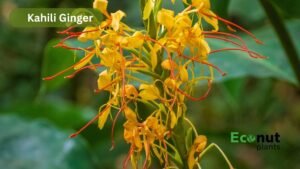
Botanical Name: Hedychium gardnerianum
Plant Type: Erect herbaceous perennial
Hardiness Zones: 8 to 11
Sun Exposure: Full Sun Partial shade
Large and stunning, “Kahili” ginger is prized as an ornamental because of its amazing flower show and remarkable vigour in the garden. This plant’s eye-catching and resilient tropical foliage is perfect for filling big garden spaces.
Though it is undeniably lovely, the foliage is not the primary draw for this plant. “Kahili” ginger yields beautiful blossoms. Massive flower spikes bloom in late summer. with panicles that are nearly a foot long! The landscape will be much more interesting with this striking shrub.
14. Oxblood Ginger

Botanical Name: Costus Erythrophyllus Rubra
Plant Type: Perennial
Hardiness Zones: 7 to 10
Sun Exposure: Most tolerate full sun
Oxblood is a rare and gorgeous variety of ginger plant that is remarkable in its own right. ‘Oxblood’ has tall stems with shorter leaves that spiral up from the bottom to the top instead of long leaves that emerge one by one from the rhizome. The underside of the leaves is a rich, dark red, while the upper side is a dark green colour.
Since “Oxblood” ginger prefers a steady temperature, it does well as an indoor plant. For this plant, bright, somewhat shaded light is optimal. Throughout the summer, this species bears beautiful white blooms from cones at the top of its leafy stems. Maintain a wet and well-drained soil.
15. Pineapple Ginger

Botanical Name: Tapeinochilos ananassae
Plant Type: Perennial
Hardiness Zones: 10 to 11
Sun Exposure: Full sun
This big, eye-catching ginger can grow up to 16 feet tall in its natural habitat, although it often reaches just eight feet. The glossy, deep green leaves swirl around the plant’s massive, bamboo-like stalks. For optimal results, keep this ginger in bright, indirect light or partially shaded areas.
Its common name, “Indonesian wax ginger,” comes from the inflorescences, which resemble big, red, upside-down pineapples. Like the entire plant, the blossoms are huge and striking. They persist a long time after cutting, much like most ginger flowers.
16. Bitter Ginger

Botanical Name: Zingiber zerumbet
Plant Type: Perennial herbaceous
Hardiness Zones: 9 to 11
Sun Exposure: Filtered sunlight or partial shade
A well-liked kind is shampoo ginger, which is very helpful and simple to grow. A pleasant-smelling fluid used for cosmetics is contained in the inflorescences of this plant. This liquid smells amazing and is great for cleaning and conditioning hair.
This amazing plant is native to India and was introduced to Hawaii by Polynesian people, where it has since become naturalized. Although edible, the roots taste bitter.
This plant thrives when grown in a large container. But if planted in the ground, it will endure the winter and return in the spring. Once established, this species doesn’t need much care because it can withstand some cold.
17. Shell Ginger

Botanical Name: Alpinia zerumbet
Plant Type: Perennial
Hardiness Zones: 8 to 10
Sun Exposure: Full sun or part shade
Alpinia zerumbet is a sensitive herbaceous perennial in the ginger family . Strong, meaty rhizomes that resemble culinary ginger are the base from which plants develop in tall clusters. With evergreen leaves, the rhizomes grow sturdy, slightly curved stems. In intervals along the stems, several dark green, lance-shaped leaves up to two feet long sprout.
Particularly in northern climates where it is grown as an annual. With a vividly, unevenly striped leaf, the cultivar ‘Variegata’ is a more compact and smaller plant. Leaf variegation varies greatly, with some leaves having primarily Some are mostly yellow with some green stripes, while others are green flecked with creamy yellow or gold.
18. Thai Ginger
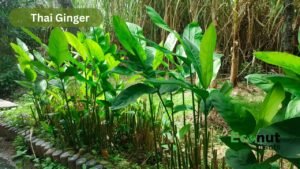
Botanical Name: Alpinia galanga
Plant Type: Perennial
Hardiness Zones: 5 to 11
Sun Exposure: Partial or full sun
Ginger root and galangal rhizome can have similar appearances. However, the truth is that a lot of people used the aromatic root galangal during the middle Ages. It was largely used in Southeast Asian cooking, but it was also used medicinally.
The tubers of the galangal and Thai ginger plants grow into rhizomes. The fact that this hot plant exists in two forms is another fascinating aspect. The Alpinia galanga and Alpinia officinarum forms are the first.
The tropical plant is also known by numerous names; the Malays refer to it as lengkuas or galangal, while the Chinese call it blue ginger. The rhizomes have solid, hard skin that ranges from tan to light brown, and their sizes and shapes might vary.
19. Resurrection Lily

Botanical Name: Lycoris squamigera
Plant Type: Perennial
Hardiness Zones: 5 to 9
Sun Exposure: Full Sun
Lycoris squamigera is a remarkably low-maintenance plant. Their special growth pattern helps them to thrive in areas with rainy springs and dry summers, so they don’t need additional irrigation during their dormant season.
Bulb sizes of Lycoris squamigera can reach up to two inches in diameter. Plant them in a spot that will provide them with some shade or full sun. Select a spot where plants can remain for a long time because they detest being uprooted once they become established.
Lycoris squamigera will die back in late spring or early summer, so there’s no need to pull out any of the faded leaves. A few months later, you’ll be shocked to discover blossoms blossoming in a variety of shades of pink on bare stalks.
Reference:
I hope you enjoyed reading the types of ginger planting guide. If you think we have forgotten something or have a suggestion, please leave it in the comment section below.

